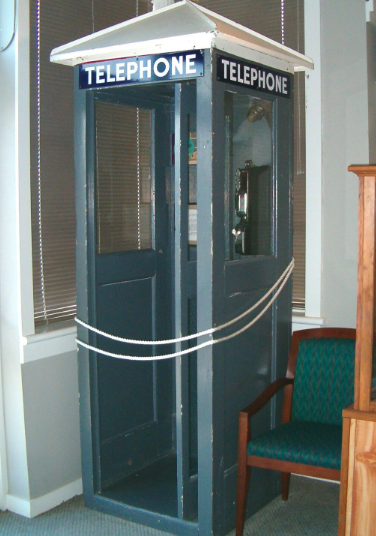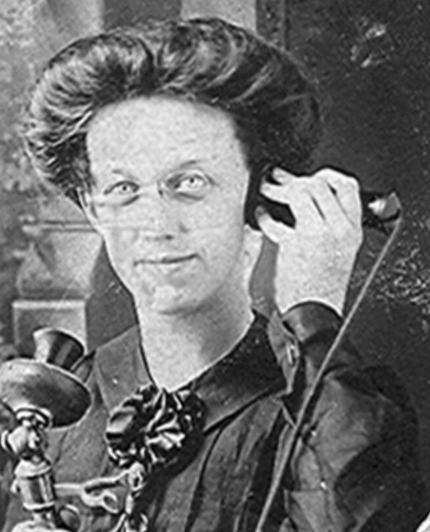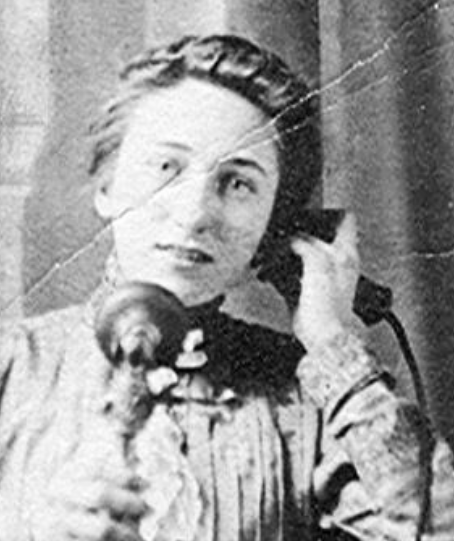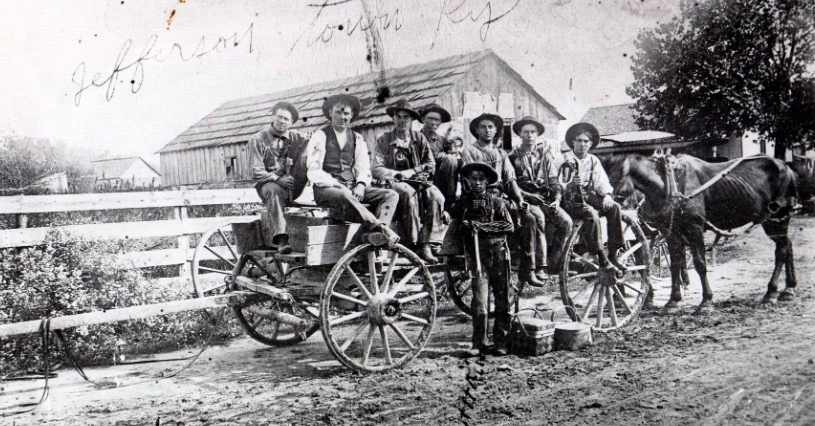A History of Telephones in Jeffersontown
Writer / Beth Wilder, Director Jeffersontown Historical Museum
 In this day and age, practically everyone owns a cell phone. In fact, most people would probably find it hard to function if that little piece of technology was not within their grasp. From the moment it was invented, the telephone became indispensable to our society — a “lifeline” that connected people who could not be together in person and gave them a feeling of security, knowing others were literally just a phone call away.
In this day and age, practically everyone owns a cell phone. In fact, most people would probably find it hard to function if that little piece of technology was not within their grasp. From the moment it was invented, the telephone became indispensable to our society — a “lifeline” that connected people who could not be together in person and gave them a feeling of security, knowing others were literally just a phone call away.
Although the first practical telephone was invented in the 1870s, Jeffersontown had no phone service until 1904. In August of that year, phone lines were run down Taylorsville Road from Louisville. It would be another eight years before electricity made its way to Jeffersontown.
The first telephone exchange in Jeffersontown was operated in a back room of the Groves Building, which once stood at the corner of Watterson Trail and Taylorsville Road in the space now occupied by King Southern Bank. It was run by the Cumberland Telephone and Telegraph Company, and Miss Jessie Gray was one of the first phone operators to work from the “hello” station there. When she resigned in February 1909, after 3 and a half years of service, The Jeffersonian newspaper noted her professionalism and pleasant attitude in dealing with irate people.
In the newly-formed telephone business, young men originally served as operators but that changed rather quickly due to complaints about their “rudeness and filthy language.” The Bell Company encouraged the hiring of women, as they could be paid less and had more patience than men. Only single women were allowed to be hired — once a woman married, she had to leave the company. That proved true in Jeffersontown as well as the rest of the country, since at least two local operators resigned their posts to marry their managers. Both of those girls were Hokes — five of the sisters from that family served as phone operators in Jeffersontown, the youngest of whom ended up working more than 35 years for the phone company.
As was noted above, The Cumberland Telephone and Telegraph Company was the first to serve Jeffersontown. A few years later, The Citizens Telephone Company and the Home Company from Fern Creek offered their services for “long distance” — which at the time simply meant the ability to call people outside the Jeffersontown area, who were not also Cumberland subscribers. As always seems to be the case, no company provided comprehensive service, and the rates of the various companies were rather convoluted and prone to being raised on a regular basis. Of course, for people unwilling to pay higher individual rates, that meant sharing a party line.
 Residents could pay for a 2-party, 3-party, 4-party, or rural party line (5 or more), which meant that the line was shared with that many other residences. Each home on that line received a designated number of rings, so if the phone rang, all the houses on that line had to wait and figure out how many times the phone would ring, then the one with that designated number would pick up. At least, that was the ideal – usually any or all of the residents on that line could pick up and listen in on calls – and they did. People who shared the line were notorious for talking too long, preventing other calls from getting through, and not allowing others to make their own calls.
Residents could pay for a 2-party, 3-party, 4-party, or rural party line (5 or more), which meant that the line was shared with that many other residences. Each home on that line received a designated number of rings, so if the phone rang, all the houses on that line had to wait and figure out how many times the phone would ring, then the one with that designated number would pick up. At least, that was the ideal – usually any or all of the residents on that line could pick up and listen in on calls – and they did. People who shared the line were notorious for talking too long, preventing other calls from getting through, and not allowing others to make their own calls.
By the 1940s, Southern Bell Telephone and Telegraph Company provided service to the Jeffersontown area. In 1941, Jeffersontown converted to a Dial System, so individuals could dial the number of whomever they wished to call, without the help of an operator. This benefitted the town, as in 1947, there was a strike by the phone company that left most communities without the services of an operator to connect their calls.
The 1940s also saw the advent of outdoor telephone booths. During World War II, the service was needed for Army bases, defense projects, and housing units. Phone booths did not become generally available for public use until 1951. One used to stand on the town square in front of the old Jeffersontown Fire Department that was located where the Jeffersontown Chamber of Commerce is now. An outdoor phone booth similar to the one that stood on the town square is currently on display in the Jeffersontown Historical Museum, and it produces a great deal of wonder and enthusiasm — especially from children who have never seen such a thing. Even “dial” telephones amaze and confound the little ones, who just cannot understand the purpose or logistics of using a rotary dial.
Ever since the telephone came to Jeffersontown, the number of people who wanted service steadily increased. In 1955, E.C. Ries, suburban manager for Southern Bell, noted that there were 1,588 telephones serving Jeffersontown, up from 1,454 the previous year. He pointed out that “telephone growth could be used as a barometer of over-all local progress” and added that he was “proud that Southern Bell could be an integral part of the forward movement of Jeffersontown.”
 By the 1950s, phone numbers had increased from the original two digits plus a ring number, to four-digit numbers. In 1957, a new means of assigning phone numbers came into being – from that point on, numbers in each area of the county would contain a call letter and a numerical prefix, plus four digits (most customers would get to keep the four digits they were already using). Jeffersontown received the designation ANdrews 7 – or 267, the common prefix known throughout the town before the use of cellular and office 8×8 phones systems became prevalent.
By the 1950s, phone numbers had increased from the original two digits plus a ring number, to four-digit numbers. In 1957, a new means of assigning phone numbers came into being – from that point on, numbers in each area of the county would contain a call letter and a numerical prefix, plus four digits (most customers would get to keep the four digits they were already using). Jeffersontown received the designation ANdrews 7 – or 267, the common prefix known throughout the town before the use of cellular and office 8×8 phones systems became prevalent.
In 1961, the area went to “all number calling” and did away with prefixes like ANdrews. According to the July 24, 1969, Voice-Jeffersonian newspaper, “some people at the time were not sure of the ease in which they could dial an all numeral telephone number.”
Interestingly, the same article, which touted the growth of the phone company and the importance of phones, posited the following questions and statements in the final paragraph: “What about the next 20 years? What will technology add to suburban progress? Well, there will be many new ways of communicating. The picture phone service may be the most common means of communication. Then you will have face to face communications across our continent and over oceans without being there.”
It took a little longer than 20 years, but they seemed to know what they were talking about.






